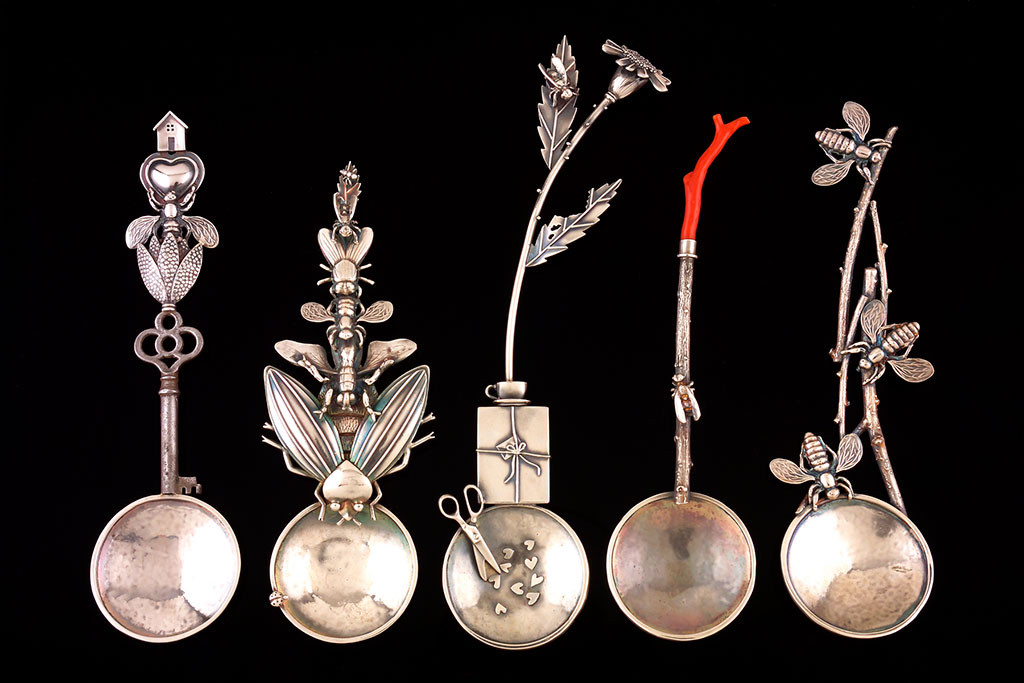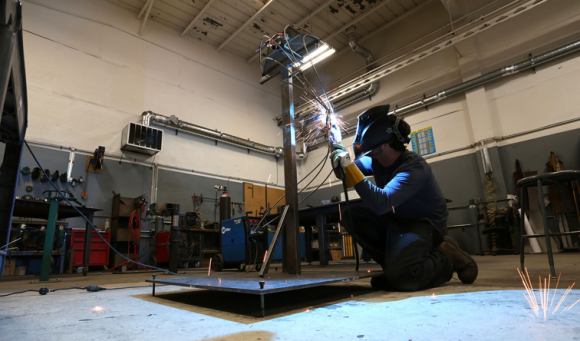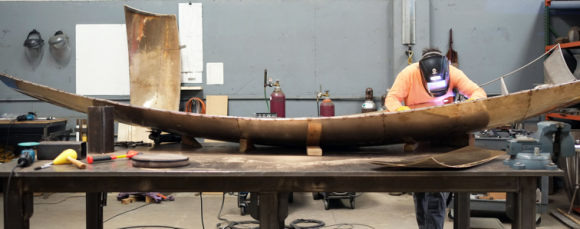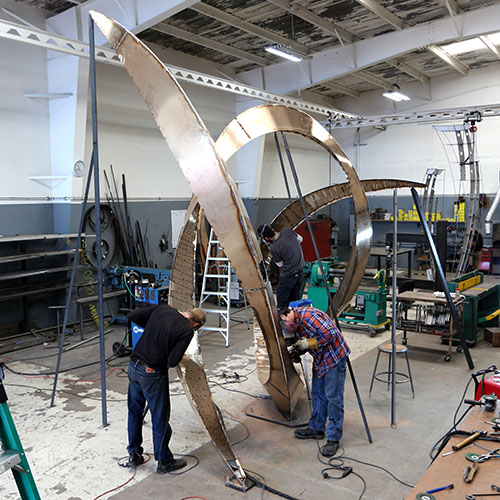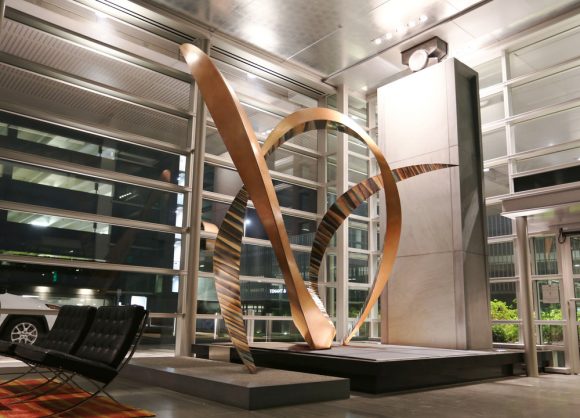Inspired by the plants and insects in their garden, jewelers Roberta and David Williamson will be among 145 artists from across the country showing their handcrafted work this week at the American Craft Exposition (ACE). The juried exposition at the Chicago Botanic Garden is also a fundraiser for the Auxiliary of NorthShore University HealthSystem.
Roberta recalls the early days of her work, when, shortly after her daughter was born, she peered out the window and observed a mother bird feeding its young. She marveled at its instinctual behavior and how the scene symbolized her own experience. The artist was inspired to create a series of charms for necklaces depicting stories of nature such as that one, which she later told to her young child. “I always see those kinds of connections between people and nature and how inspiring that is,” she said.
It is that type of inspiration that has energized her work each year, leading to new creations that she and David craft with much thought and care. “We are great observers of nature and incorporating that into the work,” she noted. “People who collect our work come year after year and we think about them as we are creating the work, and know who will love which piece…they are growing with us and that’s amazing.”
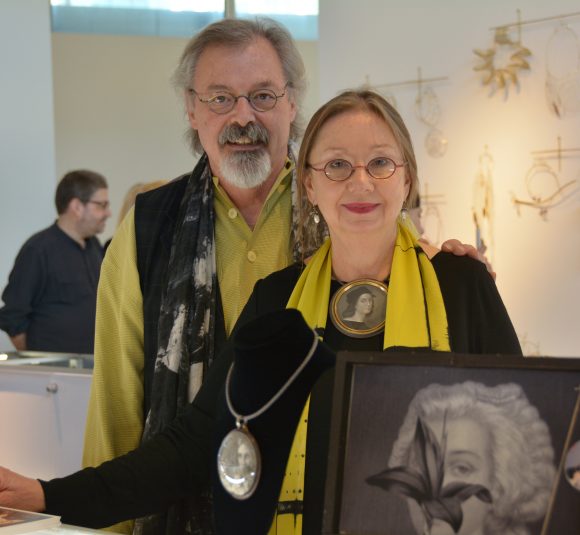
Based in Ohio, the Williamsons are also professors of art at a liberal arts college near Cleveland. The natural-born teachers enjoy sharing the stories of their art with students and visitors to ACE. At home, they are avid gardeners, working across their one-acre property as much as possible to plant urns and work with their favorites—foliage and flowers. “We plant and really enjoy that process,” said Roberta. “We are passionate about it and just being so in touch with nature, we bring that to the work. Many of our pieces are about plants and the insects that inhabit the garden.”
As much as nature enhances their work, the jewelers also find inspiration in other sources. “I think besides the garden and any insects and birds, the other part that we are really interested in is antique etchings, but primarily the early costumes of royalty and the embellishment on the clothing that they wear,” said Roberta. Both interests can be seen in much of the body of work they create each year.
Just as their own stories have evolved over the years, such as Roberta finding a love of nature after moving from Chicago to the suburbs as a child, the story of each piece of their jewelry evolves from the time they begin to create it to the life it takes on when it is in the hands of a new owner.
ACE cannot come soon enough for the couple, who are energized by the atmosphere of the event, the presence of their fellow artists, the event committee, and the lush setting of the Garden. “I just hope that a lot of people will be able to come to see how spectacular the combination of the art in the show is beside the Botanic Garden. I think their spirits will be so lifted that it will be really magical,” Roberta said.
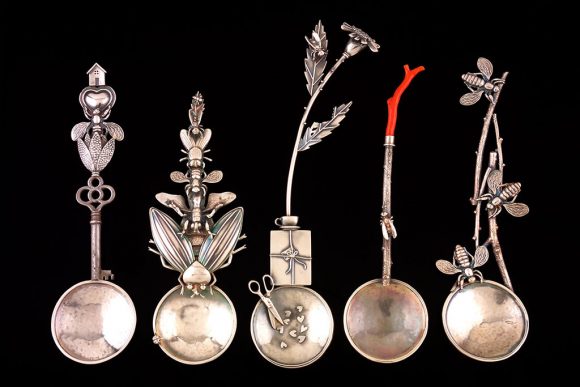
The American Craft Exposition opens with a Benefit Preview on Thursday, September 14, and is open to the public Friday through Sunday, September 15 to 17. Proceeds from ticket sales support research into orthopaedic regenerative medicine and pharmacogenomics, or how changes in one’s DNA affect the way the body responds to medication.
©2017 Chicago Botanic Garden and my.chicagobotanic.org

